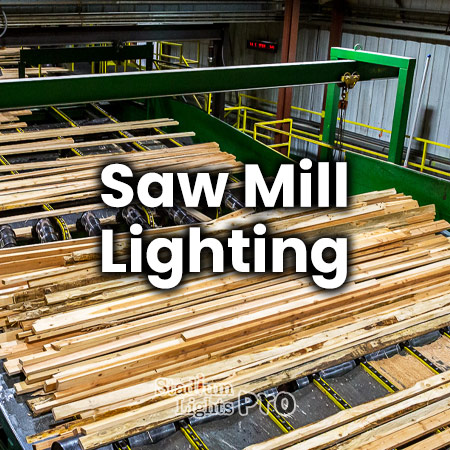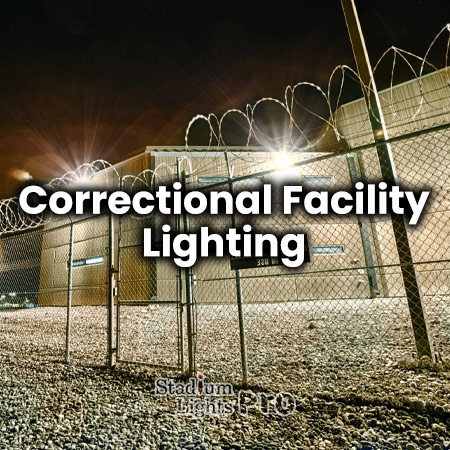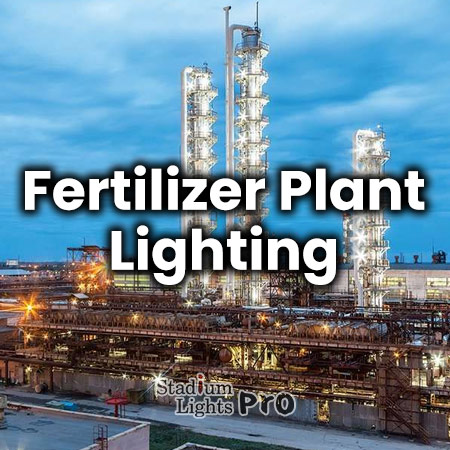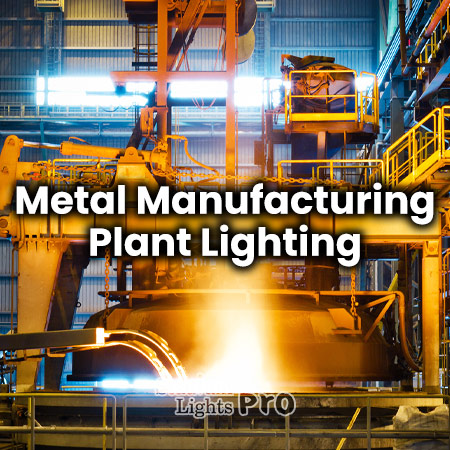In the realm of industrial operations, few places demand the perfect blend of safety, efficiency, and precision like a sawmill. Sawmills are dynamic environments where lumber is transformed from raw logs into a wide array of products. Adequate lighting in these facilities is not just a convenience; it is an imperative. In recent years, LED lights have emerged as the lighting solution of choice for sawmills, and for good reason.
The importance of saw mill lighting
Sawmills operate tirelessly, running 24/7, engaging in a range of activities from the initial log sorting and cutting to the intricate processes of milling and quality control. In this dynamic environment, the role of adequate lighting cannot be overstated, primarily for the following compelling reasons.
Safety first
Sawmills inherently pose numerous risks due to the presence of heavy machinery and high-speed cutting equipment. Inadequate lighting in these circumstances can create an environment where accidents are more likely to occur. Proper illumination, therefore, becomes not just a convenience but a vital necessity. It acts as a protective shield, reducing the chances of accidents and ensuring the safety and well-being of the workers who operate in this challenging environment.
Quality assurance
Achieving the highest quality lumber products is a fundamental objective in any sawmill operation. This involves a precise visual assessment of the wood at various stages of processing. Inadequate lighting can obscure crucial details, leading to errors in grading and sorting. By ensuring well-lit workspaces, the sawmill can maintain the accuracy and integrity of its quality control processes, ultimately resulting in superior end products.
Enhancing productivity
Efficiency is the lifeblood of a sawmill. A well-lit workspace is a catalyst for productivity. Proper illumination enables workers to perform their tasks with precision, reducing the likelihood of costly errors and frustrating delays. It streamlines the workflow, allowing for smoother and faster processing of lumber, which is crucial in meeting production quotas and maintaining competitiveness in the industry.
Types of lights used in sawmills
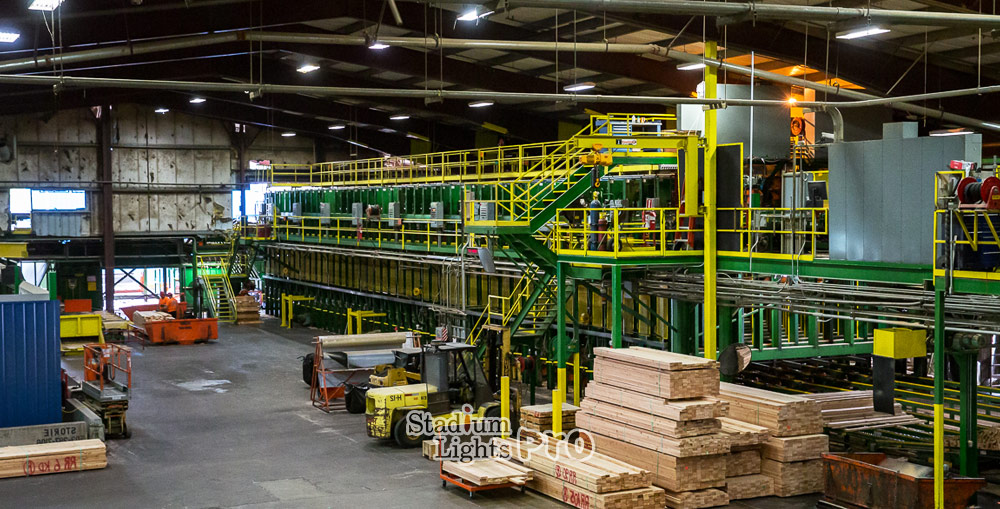
A variety of lighting fixtures are strategically employed to cater to distinct requirements and environmental challenges. These fixtures serve as indispensable tools for optimizing visibility, safety, and productivity. Here are some common types of lighting fixtures used in sawmills, each with its specific purpose.
Floodlights
Floodlights are a robust lighting solution, casting a broad and powerful beam of light. Their primary role is to illuminate extensive areas within the sawmill, such as outdoor log storage yards and expansive outdoor workspaces. These fixtures are designed to provide ample visibility across large spaces, ensuring that workers can efficiently carry out tasks even in open-air environments.
High bay lights
High bay lights are designed for indoor spaces within the sawmill, particularly in the main processing areas and indoor workspaces. These fixtures are strategically positioned at considerable heights, typically suspended from the ceiling. Their specialty lies in delivering uniform, high-intensity illumination from above, effectively eliminating shadows and providing ample light for precision work. High bay lights are critical for ensuring a well-lit and safe working environment indoors.
Explosion-proof lights
Safety is paramount in sawmills, where dust and sawdust particles are pervasive, presenting a potential fire hazard. Explosion-proof lights are a critical component of the safety infrastructure. These fixtures are engineered to prevent ignition in explosive atmospheres, making them suitable for areas where combustible materials are present. They are equipped with specialized enclosures and safeguards that ensure the safety of personnel and property.
Vapor-proof lights
Sawmill environments can vary, with some areas exposed to high humidity or moisture levels. In such scenarios, vapor-proof lights come to the fore. They are designed to withstand the challenges posed by damp conditions, preventing water and moisture from infiltrating the lighting fixtures. This ensures the continued functionality of the lights, even in areas prone to wetness or condensation.
Best lighting design for sawmill lighting
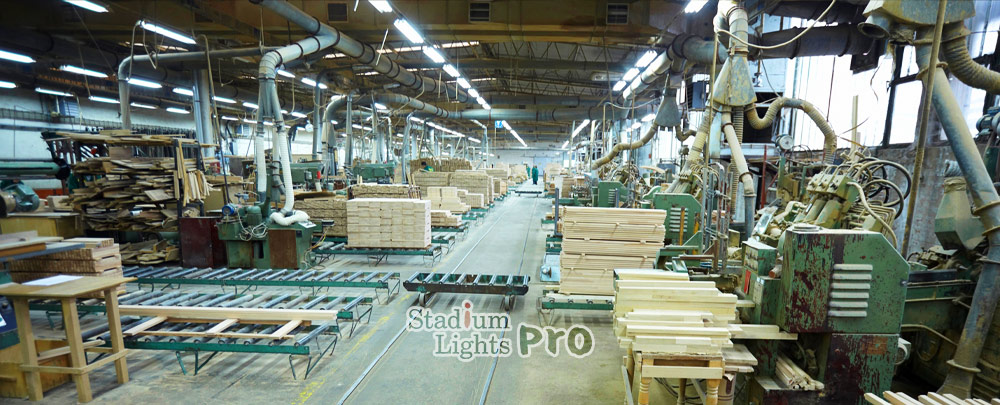
Designing the lighting for a sawmill is a complex undertaking that requires careful consideration of various critical factors. These factors not only influence the safety and efficiency of the workspace but also impact long-term operational costs.
Dust and sawdust management
Sawmills are notorious for generating copious amounts of dust and sawdust during the lumber processing stages. These particles can infiltrate and accumulate on lighting fixtures, reducing their effectiveness and lifespan. To address this issue, it’s essential to select lighting fixtures that are specifically designed to withstand such harsh environments. Explosion-proof and vapor-proof lights are engineered with sealed enclosures and rugged construction, ensuring that they can endure exposure to dust and sawdust without compromising their functionality. This not only maintains adequate illumination but also minimizes the need for frequent fixture maintenance or replacement.
Uniform illumination
Achieving uniform and consistent lighting throughout the sawmill is paramount. Uneven illumination can create shadows and dark spots, hindering worker visibility and potentially leading to safety hazards. To mitigate these risks, lighting layouts should be carefully planned to eliminate irregularities in brightness. High bay lights and floodlights, strategically positioned to provide comprehensive coverage, are commonly employed to ensure a well-lit environment without dark areas. This even illumination not only enhances safety but also boosts productivity by facilitating accurate work.
Energy efficiency
Sawmills often operate around the clock, making energy efficiency a critical concern. Traditional lighting systems can be energy-intensive and result in substantial electricity costs. In contrast, LED lights have emerged as an ideal solution due to their exceptional energy efficiency and long operational life. LED lights consume significantly less electricity, reducing energy expenses and contributing to sustainability efforts. Furthermore, their extended lifespan means fewer replacements and maintenance, reducing downtime and saving on long-term costs. Choosing LED lighting aligns with the continuous nature of sawmill operations and supports a greener, cost-effective approach to illumination.
How much does it cost to buy and install sawmill lights?
The cost of buying and installing lights for a sawmill can vary significantly based on several factors, including the size of the sawmill, the type of lights chosen, labor costs, and any additional electrical work required. Below, We’ll provide a wide range of cost estimates and elaborate on the factors that influence these costs.
Lighting fixture costs
- LED floodlights – These can range from $50 to $500 or more per fixture, depending on their brightness, durability, and brand. Floodlights for outdoor log storage areas may be at the higher end of this range due to their specialized design.
- LED high bay lights – High bay lights typically range from $100 to $300 or more per fixture. The cost may increase if you opt for high-quality, high-output fixtures suitable for tall ceilings.
- Explosion-proof lights – These specialized lights can range from $200 to $800 or more per fixture due to their safety features and robust construction.
- Vapor-proof lights – Vapor-proof fixtures are generally priced between $50 and $200 per fixture.
Quantity of fixtures
The number of fixtures required depends on the size of the sawmill, ceiling height, and specific lighting needs. A small sawmill with a low ceiling may require fewer fixtures than a large sawmill with high ceilings. For example, a small sawmill might need 20-30 fixtures, while a larger facility could require 100 or more.
Labor costs
Labor costs for installing lights can vary depending on the complexity of the installation, electrical wiring needs, and the number of fixtures. Electricians typically charge an hourly rate, which can range from $50 to $150 per hour. Installation costs can add significantly to the overall expense, especially if extensive electrical work is required.
Electrical work
If the sawmill lacks adequate electrical infrastructure or if substantial electrical modifications are needed to accommodate the new lighting system, additional costs for wiring, switches, and electrical panels must be considered. This can range from a few thousand dollars to tens of thousands, depending on the scope of the electrical work.
Energy efficiency incentives
Depending on your location and local utility programs, you may be eligible for energy efficiency incentives or rebates when upgrading to LED lighting. These incentives can help offset the initial costs of purchasing and installing LED lights.
Quality and brand
The quality and brand of lighting fixtures can significantly impact costs. High-quality, well-known brands often come with a premium price but may offer longer lifespans and better performance.
Additional costs
It’s essential to budget for any additional costs such as lighting controls (e.g., motion sensors or dimmers) and ongoing maintenance expenses.
Given these variables, the total cost of buying and installing lights in a sawmill can range widely. A small sawmill with basic lighting needs might spend a few thousand dollars, whereas a large, high-ceilinged facility with specialized lighting requirements could invest tens of thousands or more.
How many lux and watts do you need to light a sawmill?
Determining the appropriate level of illumination in a sawmill is a critical aspect of creating a safe and productive work environment. The amount of light required, typically measured in lux, varies depending on the specific tasks performed within the sawmill. Here’s a more detailed breakdown of how illumination requirements can vary.
General work areas
In the general work areas of a sawmill, where routine tasks like log sorting, transportation, and basic lumber processing take place, a minimum illumination level of 300-500 lux is recommended. This range ensures that workers have adequate visibility to carry out their tasks safely and efficiently. It helps prevent accidents and provides a comfortable working environment.
Precision work
In areas of the sawmill where more detailed or precision tasks are performed, such as grading lumber or conducting quality control assessments, higher levels of illumination are necessary. These tasks demand greater visibility to identify subtle variations in wood quality or grade. Illumination levels of 1000 lux or more may be required to facilitate accurate and reliable assessments.
How many lights do we need in a sawmill?
Determining the number of LED lights needed to achieve these illumination levels is a multifaceted process that depends on various factors.
Sawmill size
The physical size of the sawmill plays a significant role. Larger sawmills will require more lighting fixtures to cover expansive areas effectively.
Ceiling height
Ceiling height is another critical consideration. Higher ceilings may require specialized fixtures, such as high bay lights, to ensure that light is distributed evenly across the workspace.
Specific lighting requirements
Different areas within the sawmill may have distinct lighting needs. For instance, log storage yards outdoors may require floodlights for broad coverage, while indoor processing areas may need high bay lights for uniform illumination.
Regulatory and safety standards
Compliance with industry-specific regulations and safety standards is essential. These standards may dictate minimum lighting levels for various tasks within the sawmill.
To precisely determine the number and placement of LED fixtures required, it is advisable to engage the expertise of a lighting engineer or consultant. These professionals can conduct a thorough assessment of the sawmill, taking into account its size, layout, specific operational requirements, and regulatory standards. Through careful analysis and calculations, they can develop a lighting plan tailored to the sawmill’s unique needs, ensuring that it meets both safety and productivity objectives. This approach guarantees that the right number and type of LED lights are installed, optimizing the overall lighting system’s effectiveness.
Advantages of using LED lights in sawmills
Energy efficiency
LED lights are renowned for their exceptional energy efficiency, making them an ideal choice for sawmill operations, which often run around the clock.
LED lights consume significantly less electricity compared to traditional lighting options such as incandescent or fluorescent bulbs. This translates into substantial energy cost savings for sawmills, especially considering their continuous operation. Lower energy consumption also reduces the environmental footprint of the facility, aligning with sustainability goals.
Longevity
Sawmills require reliable lighting solutions that minimize downtime and maintenance costs. LED lights boast a remarkably longer operational life when compared to conventional bulbs. They can last tens of thousands of hours before needing replacement, ensuring consistent illumination for an extended period. This extended lifespan reduces the frequency of maintenance tasks, which can be particularly advantageous in high-ceiling environments where replacing fixtures is labor-intensive and costly.
Instant illumination
In the fast-paced environment of a sawmill, instant and reliable illumination is essential for safety and productivity. LED lights offer instant illumination without any warm-up period or flickering. This immediate brightness ensures that workers can start their tasks without delay, enhancing overall efficiency and reducing the risk of accidents due to poor visibility or inadequate lighting.
Durability
Sawmills are rugged environments with machinery operating in harsh conditions. LED lights are built to withstand the challenging conditions present in sawmills. They are robust, resistant to shock and vibration, and can endure the vibrations generated by heavy machinery. This durability ensures that the lighting system remains reliable even in the midst of the sawmill’s demanding operations.
Color rendering
Accurate visual assessment of lumber is critical for quality control in sawmills. LEDs provide excellent color rendering capabilities, allowing workers to perceive wood in its true colors and textures. This accurate representation is crucial for grading and sorting lumber, ensuring the production of high-quality wood products and minimizing errors.
Conclusion
Lighting plays a pivotal role in the safety, productivity, and quality control of sawmill operations. LED lighting, with its energy efficiency, durability, and adaptability to challenging environments, has become the preferred choice for illuminating sawmills. Properly planned and installed LED lighting can enhance the overall efficiency and safety of a sawmill, ensuring that it operates smoothly and produces high-quality lumber while minimizing energy costs and environmental impact.
We invite you to get in touch with us, and we’ll be more than happy to provide you with a free consultation for designing the optimal lighting setup for your sawmill. Our team of experts is here to assist you in tailoring a lighting solution that suits your specific needs and ensures the safety, efficiency, and productivity of your sawmill operations. This consultation is offered at no cost to you, so don’t hesitate to reach out and take advantage of our expertise in sawmill lighting design.

